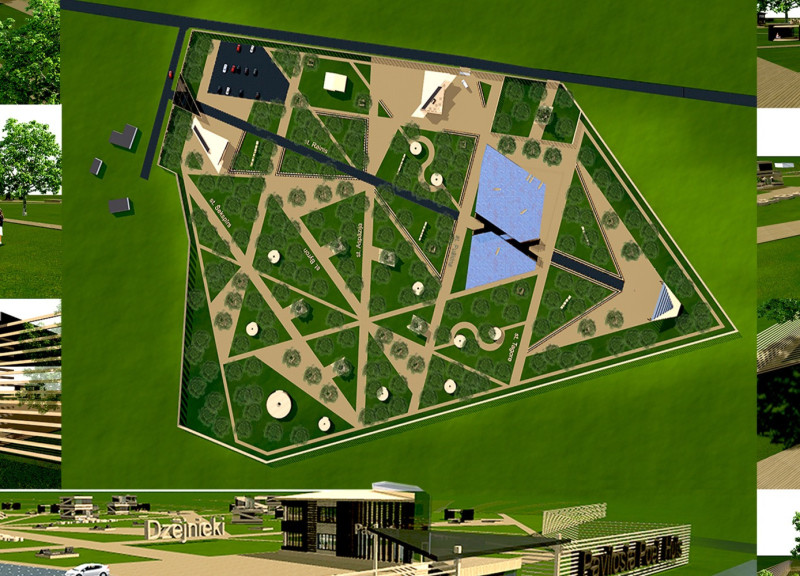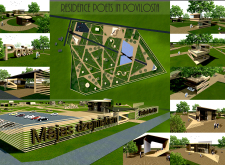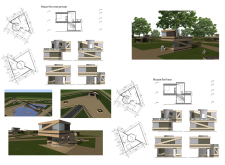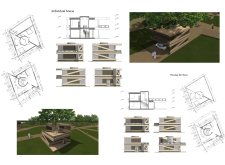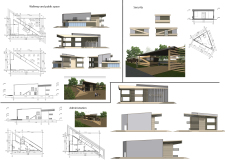5 key facts about this project
The primary function of the Eco-Urban Pavilion is to act as a gathering place for the community, offering spaces for workshops, exhibitions, and educational programs focused on sustainability. This project emphasizes the importance of integrating green practices into everyday life, making sustainability accessible to the public. By creating a welcoming and flexible environment, the pavilion encourages social engagement, fostering connections among diverse user groups.
The architectural design of the pavilion is characterized by its flowing forms and organic shapes, which mimic the surrounding landscape. Its structure utilizes large, overhanging roofs that not only provide shelter but also invite natural light to illuminate the interiors. Strategically placed openings allow for cross-ventilation, enhancing the building's energy efficiency and comfort. This careful consideration of natural elements underscores the project's commitment to sustainability.
Materials play a crucial role in the Eco-Urban Pavilion's design. Recycled aluminum is used for the structural framework, ensuring strength while minimizing environmental impact. The extensive use of high-performance glass contributes to the pavilion’s aesthetic appeal while also reducing energy usage. Interior spaces are enhanced with finishes made from bamboo, a material known for its rapid renewability and ability to create warm, inviting environments. In addition, the incorporation of green roof systems—with lightweight soil substrates and native vegetation—promotes biodiversity and supports local ecosystems, illustrating an effective approach to stormwater management.
Unique design approaches are evident throughout the project, with advanced technologies integrated into the architectural framework. The building features smart systems for monitoring energy use and environmental conditions, empowering users to optimize their experiences. Kinetic elements on the façade adapt to varying weather conditions, blending functionality with a dynamic aesthetic. Water features are thoughtfully integrated, enhancing sensory experiences while serving practical purposes in managing the water cycle.
The architectural elements of the Eco-Urban Pavilion create a harmonious environment that aligns with contemporary urban sensibilities. Its communal spaces are designed with adaptability in mind, allowing multiple functions to coexist seamlessly. This flexibility caters to the evolving needs of the community while encouraging environmentally minded practices through design.
The Eco-Urban Pavilion stands as a practical statement about the role architecture can play in addressing contemporary issues such as social interaction and environmental responsibility. It moves beyond conventional design narratives, favoring an approach that invites the community to engage, learn, and contribute to a more sustainable future. For those interested in exploring the intricacies of this architectural project further, a detailed presentation of architectural plans, architectural sections, and architectural designs is available. These resources provide deeper insights into the innovative ideas and thoughtful design strategies that characterize the Eco-Urban Pavilion.


